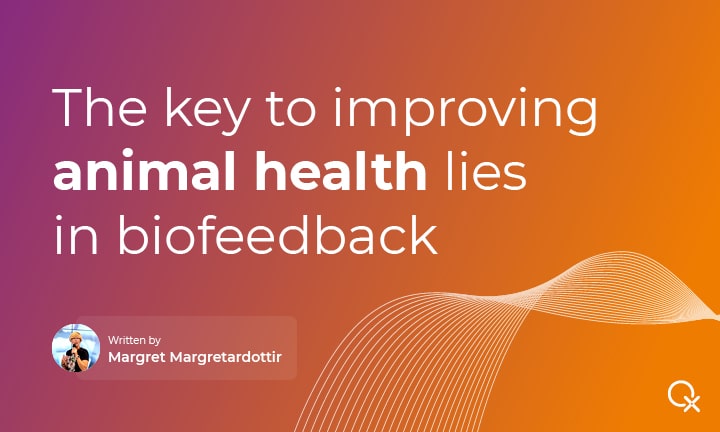
Animals are unable to tell us what is troubling them. Reversely, we cannot get them to understand what changes they need to become healthier. However, biofeedback expert Margret Margretardottir believes the key to improving animal health lies in biofeedback. She happily shares her experience in this article.
Just like humans, animals have what biofeedback scientists call a body electric. In a healthy body, all cells operate at their ideal frequency, as nature intends them to do. But when the body becomes stressed or anxious, allergic, addicted or ill, the cells that make up the brain, body and immune system can start to vibrate differently. They emit electromagnetic waves that are imbalanced.
By sending electric pulses through the body, a biofeedback device attempts to filter what’s wrong. In addition to shining a light on the animal’s health problems, biofeedback sets out to re-educate the body. By directing another loop of carefully constructed electromagnetic waves through the body, the device tries to balance the cells that have abnormal frequencies. It requires no special efforts on the animal’s side at all.
Biofeedback devices offer endless information on an animal’s health. First, I always look for repeated patterns to give me an idea of the animal’s main stressor. I also keep in mind that many of the signatures or stressors the animal is reacting to, are connected to their caregiver as many animals take over the energy field of their owner. In many cases, it is necessary to work on the caregiver as well as the animal.
Furthermore, letting the sessions take place in a familiar space is likely to produce the best results. That’s why I usually recommend involving the owner. For most pets, their presence in the room reassures them that all is well.
Many owners come to us asking whether quantum biofeedback is safe for their pet and whether there’s any risk involved. But you can rest assured. It is safe to assume that humans and animals share the same experience when it comes to quantum biofeedback. Most people who undergo these special sessions do not feel a thing when hooked up to the quantum biofeedback device. Some report a tingling sensation, but that’s it.
It is of crucial importance that the animal finds itself in a relaxed state for quantum biofeedback to take maximum effect. Therefore, it may prove more interesting to bring the needed equipment to the animal, instead of moving the animal to a specific location. This will prevent the animal from getting stressed (or, in some cases, overly excited).
Some animals respond better when they can move freely, others feel more relaxed and secure in a cage or container. But no matter their preference, I find it is very important to take the time to show the animal the harness before putting it on, letting them sniff it and talking to them in a calm voice. If they start to panic during the session, I unplug the harness and let them move around for a few minutes before trying again.
For animals who continue to show signs of stress during the session, another solution can be to balance their adrenals and run some of the biofeedback device’s relaxation programs. Usually, within 15 to 20 minutes, the animal’s breathing calms down. They start to yawn and in most cases they fall asleep.
As I see it, there is no restriction to the types of animals that can benefit from a biofeedback session. Because it is harmless and painless, there is no need to hesitate using a biofeedback device on them. In terms of results, I’ve seen hundreds of animals over the years whose medication started to work more effectively thanks to repeated biofeedback sessions. It makes me love my job of caring for animals all the more.
About Margret Margretardottir
Margret Margretardottir’s interest in working with animals began in the year 2001, when one of her dogs was diagnosed with epilepsy. She started working as a teacher in 2007. Since 2008, Margaret has been teaching at the QX World Health Academy in Budapest. Spending most of her time living with her family in the Azores, she is very much involved in her family’s charity that helps animals who are homeless or sick. While devoted to the wellbeing of all types of animals, she has been specializing in horses’ health since 2011.
+1 (989) 681-1063
+1 (856) 322-8589